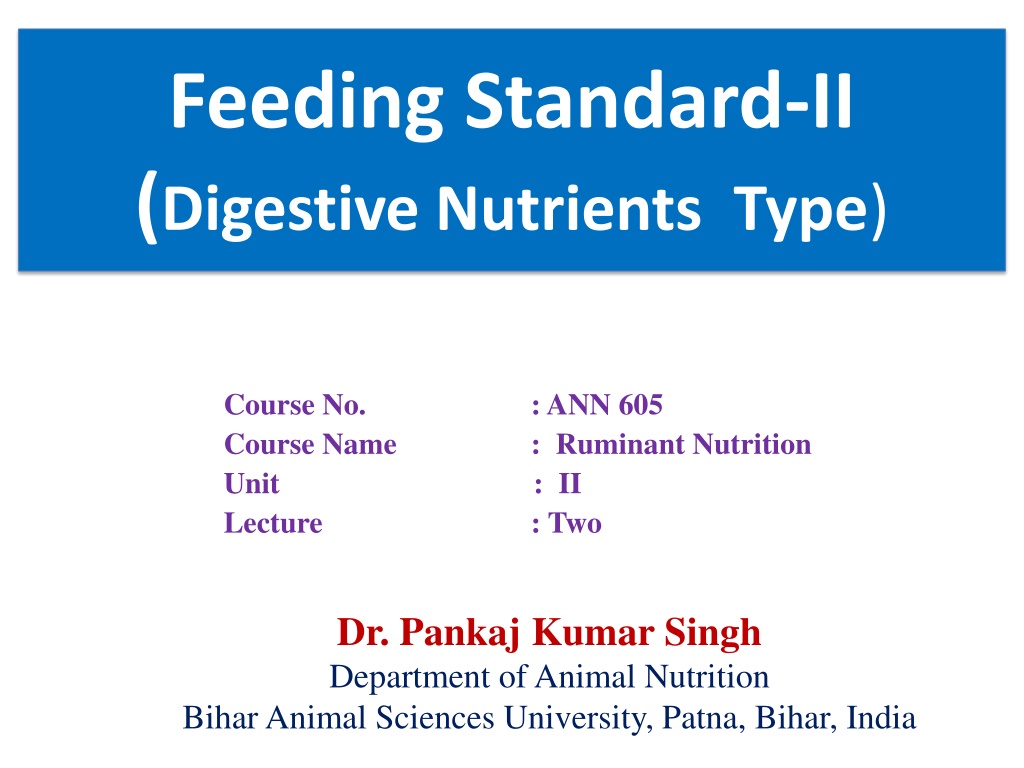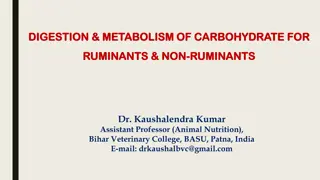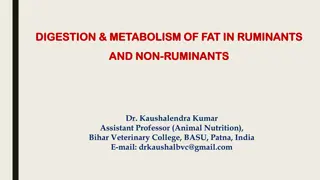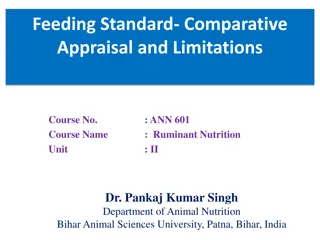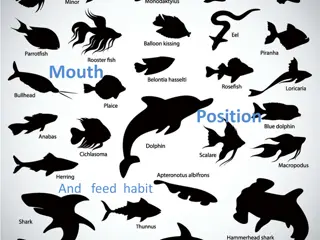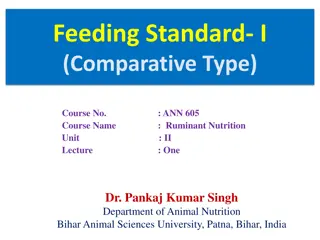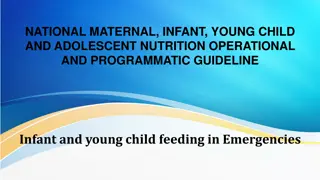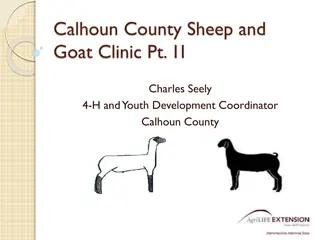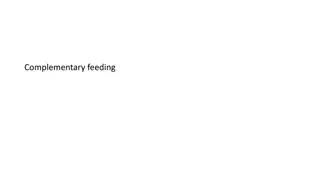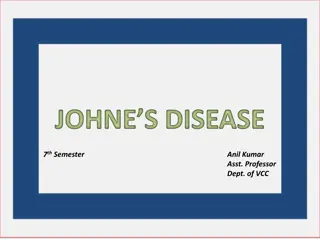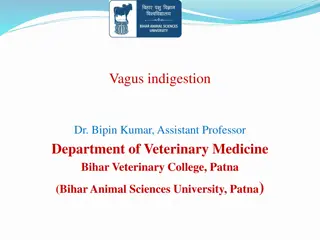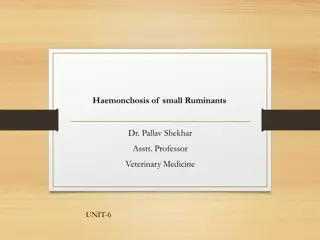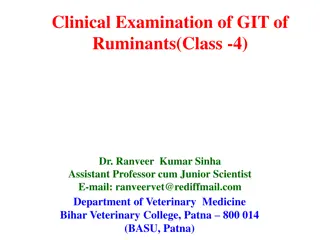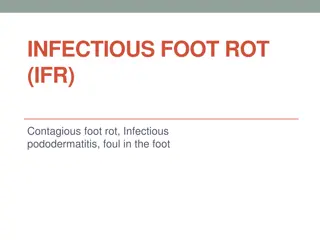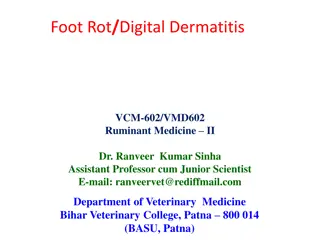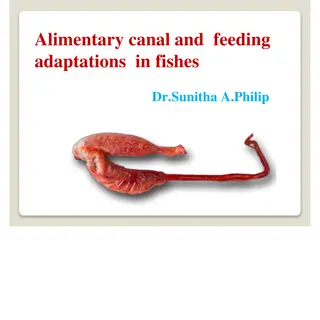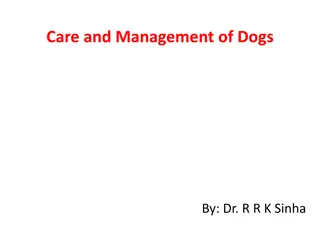Evolution of Feeding Standards for Ruminants: A Historical Perspective
The evolution of feeding standards for ruminants dates back to the 19th century, with pioneers like Grouven and Wolff introducing various criteria based on nutrient types and digestibility. Despite initial shortcomings, subsequent refinements by researchers like Professor Kuhn and Atwater have shaped modern feeding protocols for optimal livestock nutrition.
Download Presentation

Please find below an Image/Link to download the presentation.
The content on the website is provided AS IS for your information and personal use only. It may not be sold, licensed, or shared on other websites without obtaining consent from the author. Download presentation by click this link. If you encounter any issues during the download, it is possible that the publisher has removed the file from their server.
E N D
Presentation Transcript
Feeding Standard-II (Digestive Nutrients Type) Course No. Course Name Unit : II Lecture : ANN 605 : Ruminant Nutrition : Two Dr. Pankaj Kumar Singh Department of Animal Nutrition Bihar Animal Sciences University, Patna, Bihar, India
Classification of Feeding Standard (a) Comparative type (b) Digestible Nutrient system (c) Production value type Comparative type Digestible Nutrient System Production value type Grouven s Feeding system Wolff s feeding standard Wolff s Lehmann feeding standard Haeckers s Feeding standard Savage feeding standard Morrison standard National Research Council standard Indian standard system Kellner-feeding standard Hay standard Armsby feeding std Scandinavian feed unit Standard Agricultural Research Council Standard.
FEEDING STANDARD-II (DIGESTIBLE NUTRIENT TYPE) 1. Grouven s Feeding Standard In 1859 Grouven, a German chemist published First Feeding Standard for farm animals with crude protein, carbohydrates and fat contained in the feed as the basis of the standard. According to this standard a cow weighing 1,000 lbs. should be fed 28.7 lbs. of dry matter containing 2.67 lbs. of crude protein 0.6 lb. of crude fat and 14.55 lbs. of crude carbohydrates. Very soon after standard of Grouven, Henneberg and Stohann found that the total nutrient contained in a feed did not form an accurate guide to its value. The proportion of digestible parts varied with different feeds and hence the digestible nutrient would be more valuable. So due to this defect Grouven s feeding standard is now abandoned.
2. Wolffs Feeding Standard In 1864 Dr. Emil Von Wolff proposed a standard based on digestible protein, digestible carbohydrates and digestible fats contained in a feeding stuff. He calculated the ratio of digestible protein to digestible carbohydrate, called the Albuminoid ratio, because he recognized that the proportion of protein in the ration affected its digestibility. Later on albuminoid ratio developed as nutritive ratio. Nutritive ratio is the sum of the digestible carbohydrate, digestible protein, and 2.25 digestible fat, divided by digestible protein.
This standard through an improvement over the standard of Grouven, yet it does not consider the quantity and quality of milk produced. Keeping these shortcomings in mind Professor Kuhn published feeding standards in 1867 based upon the maintenance and production requirements along with quantity of milk production. Atwater brought the Wolff's standard to the attention of American workers in 1874 in the annual report of the Connecticut Board of Agriculture. In 1880 these standards were also published by Armsby in his book "Manual of Cattle Feeding". As a result, the Wolff standards commenced to be used in the United .
Atwater`s Available Fuel Value In 1890 Atwater proposed a feeding standard based on the "available fuel values" of the feeds. The system is based on the heats of combustion of protein, fat and carbohydrate, which are corrected for losses in digestion, absorption and urinary excretion of urea. In this system, digestibility coefficient of carbohydrate (0.98), fats (0.95) and protein (0.92) of a mixed diet was taken into account and these figures were multiplied by gross energy of the nutrients. In this case of protein, a subtraction of 1.25 kcal per gram was made for the energy lost in the urine.
Wolffs Lehmann feeding standard Dr. G. Lehmann of Berlin modified Wolff s standard in 1896. Till then Wolff s standard was in use. He took into account the quantity of milk produced, but he failed to take into account the quality of milk. The requirements of a cow with a body weight of 1000 lbs. as fixed by this standard for maintenance and maintenance cum milk production are as follows: In 1898, Henry published the first edition of his book Feeds and Feeding , which contained tables showing the average composition of American feeds, digestion coefficients for protein, crude fiber, nitrogen free extract, and ether extract. This feeding standards for various classes of livestock included intakes of dry matter, digestible protein, digestible carbohydrates, and digestible ether extract. Nutritive ratios= (Digestible carbohydrate + Digestible ether extract X 2.4 ) Digestible protein
Haeckers feeding standard Haecker an American worker who for the first time considered quality as well as the quality of milk produced in formulating a feeding standard. Haecker recognized that the food requirements must vary in accordance with the composition of the product. He was also the first to separate requirements for maintenance form the requirements of production. He took into account the allowance for the percentage of fat in the milk in addition to the requirement for maintenance, production and total milk yield. His standard included digestible crude protein, carbohydrates and fats. Later it was expressed in digestible crude protein and total digestible nutrients
Savage feeding standard Another American scientist Savage came to the conclusion that the Haecker standard was too low especially in protein. Harrison and Savage compared concentrate mixtures containing 12, 16, 20 and 24 percent protein fed with corn silage and trimothy-clover mixed hay during complete lactations. The 16 percent feed gave as good results as higher levels, but the 12 percent was inadequate. Based on Haecker's maintenance figure the 16 percent supplied 128 percent of the protein in the milk.
Savage published his feeding standard by increasing 20 % protein requirement in 1912. He expressed his standard in terms of DCP and TDN and further showed that about 2/3 requirement of the dry matter should be met by feeding roughages and the remaining 1/3 from concentrates. He suggested that in case of milking cows at least 24 lbs. of dry matter should be provided for an average cow. The nutritive ratio should not be wider than 1:6 or narrow than 1:4.5.
Morrison Feeding Standard Morrison combined nutrients requirement in one set of standards as the best guide available in computation of rations for the various classes of stock. These standards were first presented in the 15th edition of Feeds and Feedings published in 1915 and where then called Modified Wolff and Lehmann standard . They soon came to be known as the Morrison Feeding Standard . These standards have expressed in terms of Dry Matter (DM), Digestible Protein (DP) and Total Digestible Nutrients (TDN). Morrison indicated the nutrient requirement of animals in a range rather than in one figure. The average of Morrison standards has been accepted for Indian livestock.
National Research Council (N.R.C.) standard In 1942 the Committee on Animal Nutrition of the National Research Council (NRC) of the National Academy of Sciences published the Recommended Nutrient Allowances for Farm Animals, comprising separate reports for poultry, swine, dairy cattle, beef cattle, sheep; and horses. The NRC reports representing in each case the pooled judgment of a group of experts in the field or the species in question, and it should be considered the most authoritative statements of the nutritional needs of farm animals for feeding practice in the United states.
The standard includes digestible protein and total digestible nutrients and also includes the recommended requirements for calcium, phosphorus, carotene and vitamin D for dairy cattle, beef cattle, pigs, poultry, sheep dogs, horses, laboratory animals etc. Today in a number of countries NRC standards are followed where they use ME for poultry, DE for swine and horses, DE, ME and TDN for sheep, ME, TDN and NEm and NEg for beef cattle and for dairy cattle, values are given for DE, ME, TDN, NEm and NEg for growing animals with additional values as NEl for lactating cows.
Indian standards Sen and Ray standard Dr. K. C. Sen, the first Director, National Dairy Research Institute, Bangalore and Karnal and Ray have compiled the feeding standards for Zebu cattle and buffaloes, based on Morrison s recommendations. Average of maximum and minimum values recommended by Morrison. Later on, Sen, Ray and Ranjhan (1978) revised the Sen and Ray (1964) standard on the basis of experimental trials conducted in Indian animals. These modified values are still functioning in many of our established dairy farms.
Indian council of agricultural research feeding standard Considering the fact that nutrient needs of livestock and poultry breeds under tropical environments are different from those developed in temperate climate. The scientific panel set up sub-committees for each species by inviting experts from various institutes of the country. On the basis of the scientific information arising from the experimental work carried out in India over the past two decades, nutrient requirement of Indian livestock and poultry ultimately has been published by ICAR in January 1985 under the Chairmanship of the panel Dr. K. Pradhan, which formed a strong basis for feeding our livestock and poultry.
These standards were updated and were revised in 1998. Latest feeding standard was published by ICAR, New Delhi in 2013. In India, Bureau of India Standards (BIS) also publishes feeding standard for different categories of poultry. Latest BIS publication for poultry feeding is 2007. The feeding standards are based on the experimental results and have been organized to contain information on daily DM, DCP, TDN, Calcium and Phosphorus intake in cattle. For poultry protein is expressed in terms of crude protein (%) whereas energy is expressed in metabolisable energy (kcal/kg diet).
5.10 References BIS (2007). Indian Standard: Poultry Feeds- Specification, IS-1374. Bureau of Indian Standards, 9, Bahadur Sah Zafar Marg, Manak Bhawan, New Delhi, India. Bondi A (1987). Animal Nutrition. Wiley Inter Science. Cramptan EW and Harris LE. (1969). Applied Animal Nutrition. WH Freeman. Garnsworthy P C and Wiseman J (1990). Recent Advances in Animal Nutrition, Nottingham, Nottingham University Press, pp. 255 75. ICAR. (2013). Nutrient Requirements of Poultry. Nutrient Requirements of Animals. Indian Council of Agricultural Research, New Delhi, India Maynard, L. A., Loosli, J.K., Hintz, H. F. and Warner, R. G. (1979). Animal Nutrition. 7th Edition, McGraw-Hill, New York. Mc Donald P., Edwards R.A., Greenhalgh, J.F.D., Morgan, C.A., Sinclair, L.A and Wikinson, R.G (2010). Animal nutrition. 7th edn. Prentice Hall, Harlow,, UK Morrison, FB. (1917). The Modified Wolff-Lehmann Feeding Standards. Journal of Animal Science, 1: 64 69. National Research Council 2001 Nutrient Requirements of Dairy Cattle, 7th rev. edn,Washington, DC, National Research Council. National Academy of Sciences/ National Research Council 2007 Nutrient Requirements of Horses, 6th rev. edn,Washington, DC, National Academic Press. National Research Council 2007 Nutrient Requirements of Small Ruminants: Sheep, Goats, Cervids and New World Camelids, DC,Washington, National Academic Press. Ponds WG, Church DC, Pond KR and Schoknecht PA. (2005). Basic Animal Nutrition and Feeding. Wiley Dreamtech India. Thomas C 2004 Feed into Milk: A New Applied Feeding System for Dairy Cows, Nottingham, Nottingham University Press.
